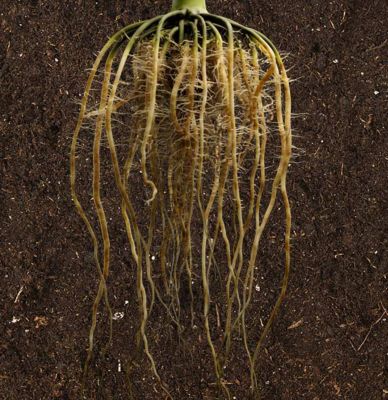Selecting Micronutrient Sources
There are three main classes of micronutrient fertilizers: inorganic, synthetic chelates, and natural organic complexes.
Inorganic sources consist of oxides, carbonates, and metallic salts such as sulfates, chlorides, and nitrates. Sulfates are the most common metallic salts used in the fertilizer industry because of their high water-solubility and plant availability. Less soluble oxides must be finely ground or partially acidulated with sulfuric acid to form oxysulfates in order to increase their effectiveness. Metal-ammonia complexes such as ammoniated Zn sulfate decompose readily in soils and provide good agronomic effectiveness.
Chelates are fertilizers in which the micronutrient is combined with an organic molecule to increase its stability and effectiveness in the soil. Chelates such as Zn-EDTA are more stable and more effective in correcting Zn deficiency than other forms of applied Zn. Synthetic chelates are more effective and less variable than natural organic complexes such as lignosulfates, phenols, and polyflavonoids.
Method of Application
The best method of micronutrient application depends on the element and when the deficiency is being addressed.
Soil application. For deficiencies known at the start of the season, soil application is preferred to foliar application for most nutrients. Micronutrients banded with starter fertilizers at planting time are usually more effective over a longer period than foliar-applied micronutrients. This method also gets the nutrient to the plant at the earliest opportunity.
Soil-applied micronutrients may also be broadcast, but a concentrated band near the plant allows lower use rates of sometimes expensive materials. Manganese should only be banded, because of the ability of most soils to strongly “fix” this element. However, boron should not be banded, as high concentrations near the seed can be toxic.
Foliar application is especially useful for some elements that are not efficiently used when applied to the soil, such as iron. This method is also useful for quick uptake in emergency situations when deficiencies are noted or in cases where other materials are being sprayed. Like banding, foliar applications generally have lower use rates, but more than one application may be needed. However, because the crop partially develops prior to foliar application, irreversible damage may have already occurred before the needed nutrient is supplied.
Broad-spectrum micronutrient applications are not recommended to treat a single micronutrient deficiency, as this approach is expensive and potentially harmful to the crop. The harm can occur because of potential toxicities, or because the presence of additional nutrients may interfere with the uptake of the needed nutrient.
Achieving a uniform spread pattern is important to correct deficiencies, regardless of whether the material is liquid or solid, banded or broadcast, or preplant or foliar applied.







